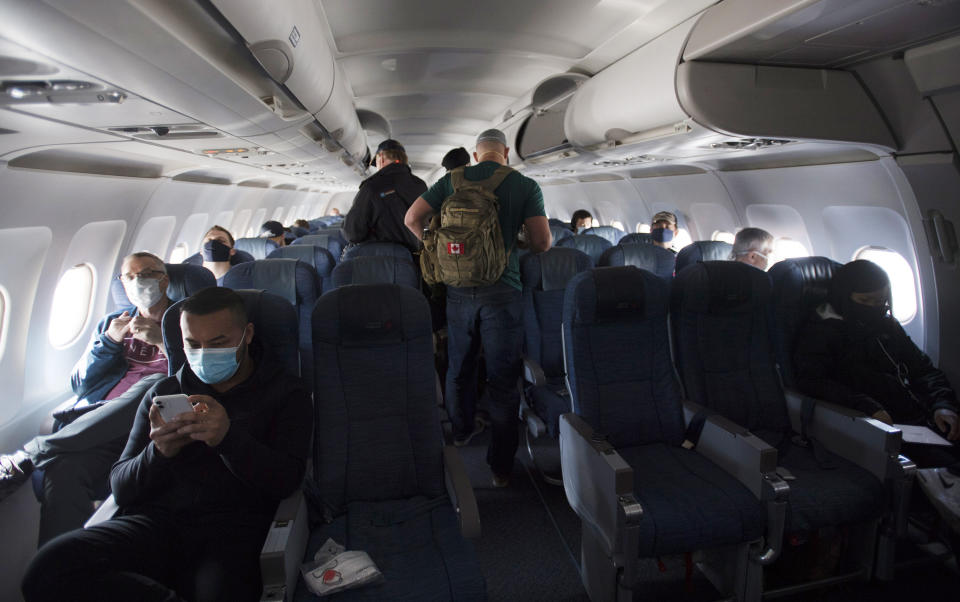COVID-19 risk to plane passengers may be lower than you think

As of July 1, travellers flying on Canada’s two main airlines can expect more seats to be filled, including middle ones. Air Canada and WestJet recently announced it will allow passengers to reserve seats next to each other, despite physical distancing guidelines that require people to keep two metres apart nearly everywhere else. These changes have raised concerns about an increased risk of spreading the virus.
Since the COVID-19 pandemic was declared in March, airlines around the world have been making an effort to enforce physical distancing measures by keeping passengers apart by spacing seats. This hasn’t helped the airline industry, which has already been hard hit with travel restrictions as a result of border closures.
Despite the concern, one epidemiologist says that airplanes aren’t necessarily a vulnerable space for contracting the virus when you consider all the other measures that are in place to keep them clean.
Isaac Bogoch is an epidemiologist and associate professor with the Faculty of Medicine at the University of Toronto. He says when you examine the factors that are in place for onboard safety, like air circulation and filtration, along with the requirements to wear masks and proper hand hygiene, the risk is lower.
“While the decision to do this from an optics doesn’t appear to align with physical distancing principles, the risk on airplanes is still lower than people think,” he tells Yahoo Canada. “The areas of safety that have been introduced are pretty impressive.”
According to the International Air Transport Association (IATA), the trade organization for many international airlines, “mandating that airlines use empty seats to increase physical distance between passengers is not an effective health precaution on board aircraft.”
From a broad perspective, Bogoch says there should be more focus on the precautions surrounding all parts of travel, not just flying. The journey of getting to the airport, waiting in lines for security screening and pre-boarding can also potentially increase travellers’ exposure to the virus.
“It’d be hard to quantify what the actual risk (of flying) is,” he says. “Whatever that is, it’s likely to be a lot lower than people think because of the safety measures.”
A study published in February by the Canadian Medical Association Journal looked into one of the first reported cases of COVID-19 in Canada. The infected person flew from Wuhan to Guangzhou, then Guangzhou to Toronto, arriving on January 22. Although he was symptomatic, no one who came in close contact with him contracted the virus. It concluded that “the lack of secondary cases after prolonged air travel exposure supports droplet transmission, not airborne, as the likely route of spread of the COVID-19.”
Bogoch says having a group of people in any enclosed setting can be a risk. That can apply for any indoor environment or other modes of transportation, like buses or ferries, which might not have the same cleaning systems in place as they do on airplanes.
“When we look at the data that’s actually available, based on how airplanes are designed, this appears to be a lower risk than people actually think,” he says.

 Yahoo Finance
Yahoo Finance 


